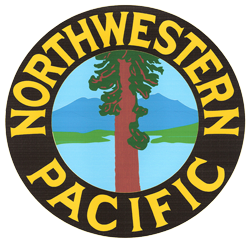From The Headlight November – December 2016
Central Pacific 29
WABCO, Queen Posts and Paint
By Mike Manson
Work continues on several items. The Westinghouse Air Brake Company’s (WABCO) auxiliary reservoir and the four Wason queen posts went to a sandblasting shop for cleanup. When they were returned to Jeff and Don Millerick’s shop the tank and posts each received two coats of black enamel paint.
The triple valve that was sent to Pittsburg for rebuilding, was returned without repairs having been made. The shop was not able to find the necessary parts. We have a lead on another shop in Ontario, east of Los Angeles. The author is using the Speed Heater infrared lamp to remove the old paint from the end wall in the northeast corner of the car. The 1100-watt lamp softens paint in less than 40 seconds, allowing the paint to be scraped away and leaving nearly bare wood.
The original coach interior wall boards below the windows were finished with a clear coating, while the end wall base boards and 3″x12″ plank trusses at the base of the side walls were finished with an unexpected red coating. Whether the red coloring is stain or paint is not yet known because the material scraped off the walls is mixed together. However, the bottom-most layer is only partially removed and requires additional work. Some testing was done using lacquer thinner and denatured alcohol to identify the original finishes, but the results were inconclusive. Additional testing will be done soon.
Charles and Dolores Hopkins of Santa Clara donated a wooden car door that had been salvaged many years ago from a MOW car at the Southern Pacific’s station at Radum, Alameda County. The detrucked car was used as an office and was slated for demolition when the door was rescued. The design and style of the door are identical to those of CP 29, indicating that the car was probably built by the Wason Manufacturing Company, too. Beneath the (missing) interior door latch the following numbers were stamped into the wood: “1156” and “1”. The “1156” identifies the car as CP 1156, while the “1” identifies it as Door #1. Central Pacific records now at the California State Railroad Museum show wooden coach 1156 was built by Wason and placed in service in September 1869. We have not yet located the original number for this car but will continue searching.
We still need donations to CP 29’s “Buy a Pound of Pedestal” campaign. Each donation of $10 will cover the prorated cost of the patterns, steel, sales tax, energy and labor needed to cast one pound of a pedestal for CP 29 and bring it to the De Carli Trolley Museum. As of September 30, we have accumulated $1,770 for the campaign. That is 12% of our goal. Every dollar helps, so please send your tax-deductible donation today.






















































